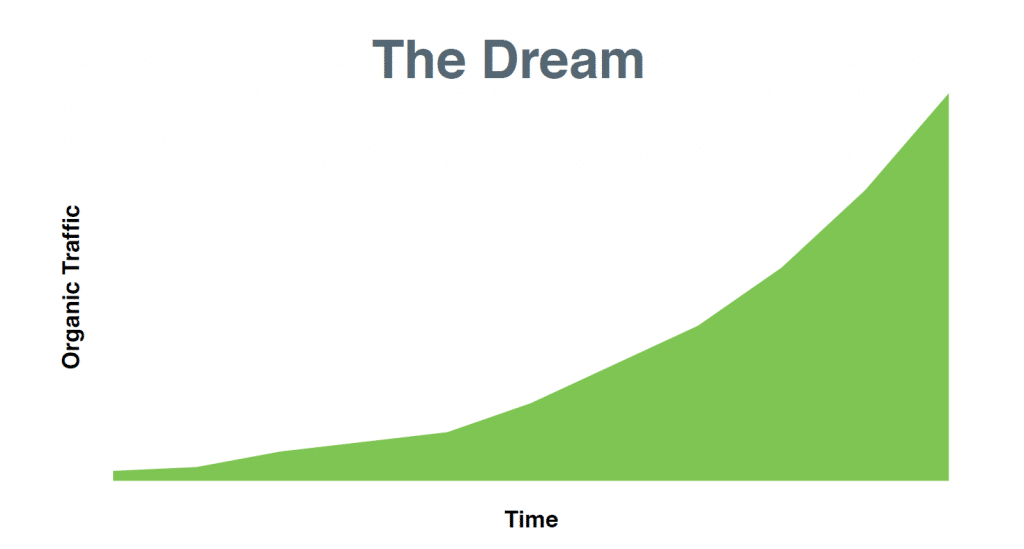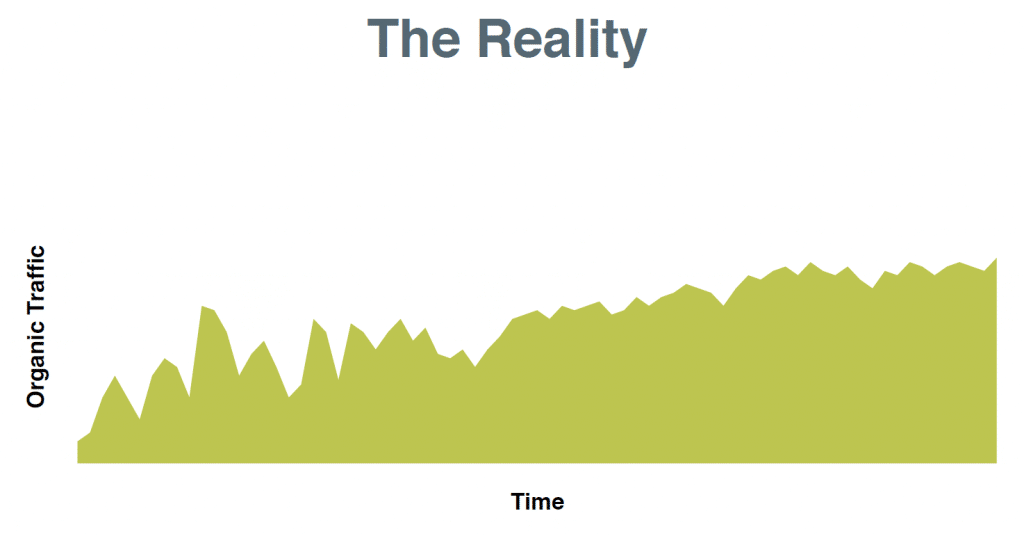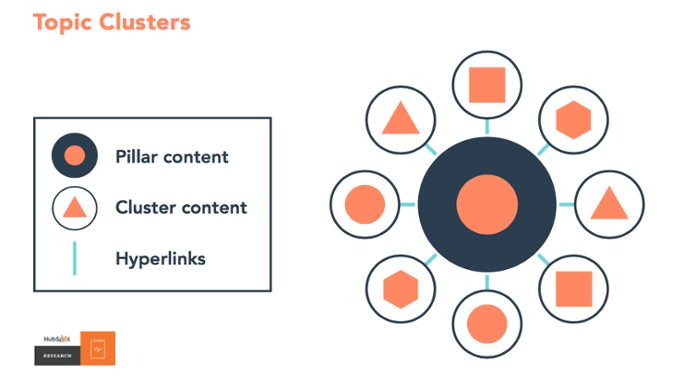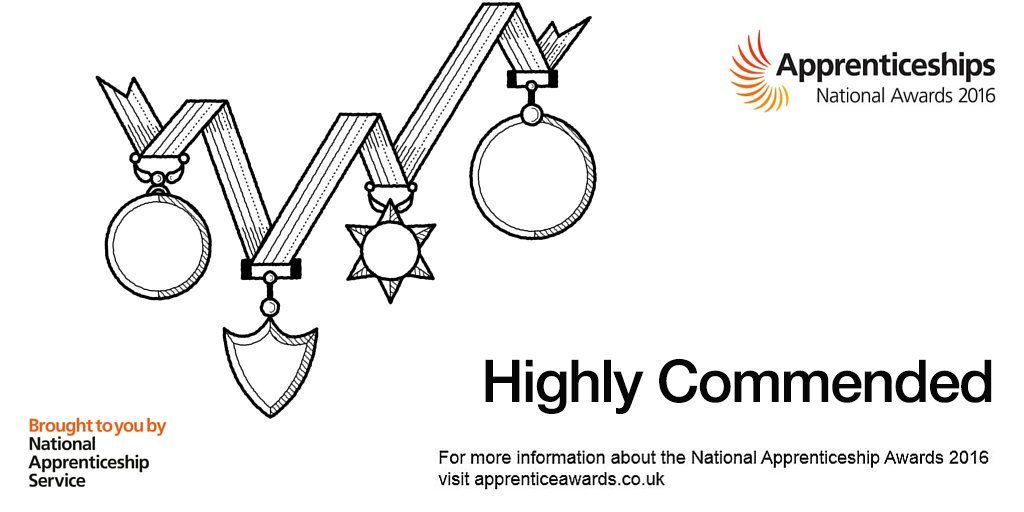Here’s Why You Don’t Rank in Google
One of the more popular talks I went to at INBOUND2017, was this “Here’s Why You Don’t Rank in Google” – the room was packed. And why wouldn’t it be? There are many articles, case studies and a lot of content around highly successful SEO campaigns. The issue is that it is difficult to understand what you can realistically expect from an organic search campaign. Sifting through the hundreds of ‘How to’ guides quickly leads you into a worm hole of contradictions and hyperbole. This is why this talk resonated with me; it may not be revolutionary but it gave some useful, real life examples.
It’s important to realise that SEO isn’t an exact science. It is certainly unpredictable – the reason being, you are not in control of all the different variables you’d need to be in control of to see predictable results. No one can say for 100% that they will rank at no 1 for everything they go after.
Using Google Keyword Planner is a great place to start when launching a new campaign to determine how many people are searching for your term, but bear in when working out an approximate click through rate, other factors can bring this figure down. Things like seasonal trends can affect this, as well as ads being presented for your search term as well as ‘images’ and potentially ‘shopping’ – these things all eat in to your search traffic. So, where you started confident that you would see a steady rise in traffic, the reality is, it’s really difficult to predict what you get from SEO.
SEO is tough – if it was easy, everyone would be ranking at number 1, and it’s only going to get tougher!
‘The Dream’ – Organic traffic goes up over time and results in high ROI/ lots of money
‘The Reality’ – peaks and troughs SEO isn’t an exact science and is prone to being unpredictable
Above: example case and indicative of an SEO campaign – steady incremental growth with dips and curves. Potentially plateau at start of the campaign and first 6 months can appear flat, but stick with it and with your strategy and you should see incremental growth.
SEO is really difficult; the most important thing you can do is to not just have a standard set of tactics you rely on, but understand why things happen and be able to diagnose problems quickly. Take a step back and understand where the problem is. SEO is 90% understanding what went wrong and 10% going in and providing a solution.
One of the most misdiagnosed problems in SEO is around issues related to authority vs relevancy and discovery - 3 fundamentally different things:
Crawling issues affect Discovery – About going and finding things online
Indexing issues affect Relevancy – Categorising the content, purely looking at what the content is about
Ranking highly related to Authority – Why should these two pieces of content talking about the same subject, rank one above the other?
Most SEO campaigns begin in the wrong way – with a significant bulk of content creation, which continues to increase over time. The problem with this? ‘Let’s just do double!’ doesn’t work. The issue is not the volume of content, the issue is that you don’t have the authority. One of the most important things for a new website/ campaign is to build authority - most often, by creating backlinks. By building authority to the point where you start to see traction, Google will also start to see that the content you are creating is trustworthy enough to rank above other content. Eventually you will hit a point where you will see more of your content ranking higher – this is when you can start increasing the volume! HubSpot kindly volunteered a few real-life examples of how they themselves encountered and solved these different issues:
Crawling-Discovery:
HubSpot did an overhaul of their content library – Their marketing library housed tones of different content offers, tons of backlinks but was not providing any negligible SEO traffic. Their first thought was that they needed to build more links – this was not the problem. Their second thought? What if it was a crawling issue. So, they crawled the pages to see what Google was seeing. What came back was a single book icon – the page had been built by wrapping everything in JavaScript and Google couldn’t crawl it. If Google can’t crawl your content it cannot index or rank it. HubSpot re-built the whole content library using basic HTML meaning Google could crawl it. After this, they saw an increase of 50k visits per month. A simple fix and back linking would not have fixed this issue!
Indexing-Relevancy:
Another example from HubSpot: they noticed that Google was removing the featured snippet for some of the blog posts they were trying to rank for, but at the same time, increasing the prevalence of featured snippets generally. Over 50% of content had a featured snippet showing around keywords they were ranking for. HubSpot were losing out on them but didn’t understand why as they have a highly authoritative domain and lots of backlinks! Looking into the problem, they found that they were being outranked by lower authority domains. So, they took look at the competition and found that time and again Wikipedia. So, what can we learn from Wikipedia, what are they doing right? For one thing, all their pages follow the same uniform structure. By doing so, Google can easily go in and crawl their pages and know they will find. By replicating this structure, they hoped to win some of the featured snippets! So how did they do it? They took blog posts where they didn’t rank and built a featured snippet-esk modules into their posts – to replicate what the feature snippet would look like to the search engine:
This produced a 10% increase in owned featured snippets within 24 hours. Something else to consider is increasing the relevancy of what Google wants for the query you are trying to rank for. Content clusters can help with this (don’t know what a content cluster is? Read about it {{here}}) – something widely spoken about at Inbound. Building and interlinking between relevant topics is key to creating strong and highly relevant content clusters. This strong internal linking also serves as a way to pass authority across the website by ‘piggy-backing’ off content that already has a lot of existing authority.
Ranking-Authority:
Authority is the hardest part! Building credible backlinks play a big part here. Building authority is also significantly affected by the other two components discussed above. After a demonstration of a marketing campaign that nosedived, the speaker then explained how he had turned this around and learnt from his mistakes. To simplify, these are the components to focus on:
- Ensuring there is a clear demand for the information - Having a clear demand for information when you’re building out projects which are focused around people linking too you, is incredibly important. Why would anyone link to you if there is no demand for what you’re offering?
- Making sure the timing is right – I guess this sits hand in hand with the above. Executing a campaign too late is going to cost you. As is trying to beat everyone else to it by executing a campaign too early before the need for the information has really had time to develop. Spotting a trend and knowing how and when to jump in, is a great skill to master.
- Creating a simple and intuitive UX – However simple or complex your content it, ease of use and quick access to the information is key to heighten your chance of building backlinks – after all, convoluted and complicated UX just doesn’t wash with today’s time sparse audience.
Nine out of ten times for a link building campaign, things don’t pan out as you want them but adhering to these things will help significantly. SEO is about knowing which levers to pull and when!
INBOUND 2017 Taught Me: Topic Clusters
INBOUND 2017; what a week. Bringing together the best of HubSpot talent along with various marketing professionals and a few big names to add some pizzazz (Michelle Obama was a personal highlight of mine). Needless to say there was some great insight to be gleaned; some exceptional content, some slightly less exceptional – which kind of reflects one of the major themes across the week, ‘doubling down’ on content and focusing on quality over quantity. Although there is no silver bullet when it comes to SEO, your content has a large effect on how and where you rank.
I went to several talks around the subject of content and SEO and one of the main takeaways, was that it is increasingly difficult to get noticed in a world saturated in content. Search engines are getting better at pushing the best and most relevant content to the top and people now search the way they speak, in other words ‘Natural Language Search’ terms are favoured over exact match keywords. Before you all despair and hang up your content writing hats for good, another takeaway was that content marketing is not dead - without content, what is marketing?
Whilst you ponder on that philosophical statement for a moment, let’s talk about how we can make things better. I think the first thing to realise is that churning out endless streams of content is no longer going to get you very far. This is applicable across the board – through B2B and B2C, in all variety of industries. People expect more today. When I say ‘expect more’, I mean quality - because they can afford to be picky; it is truly a time where inbound marketing reigns supreme and being able to ‘converse’ with your audience and know what they want, when they want it, is vital.
So, with this in mind, if we stop creating lots of content, what do we fill the gap with? Firstly, make a cup of tea. Then, take a deep breath and realise you don’t need to panic-write that Buzzfeed style list about 10 of the best whatever’s now. It’s time to bring in the Topic Cluster; a new phrase I learnt at INBOUND. The premise of this approach is that you focus on topics over keywords and start to really ‘own’ these topics by creating relevant and useful content in relation to your core topics, rather than endless reels of unrelated content that gets lost in your ever-expanding library.
It’s time to start architecting your website to make sense to Google – by creating neat little clusters of related content, you’re serving to make things a lot easier for Google to find your good stuff, all efficiently linked together and all really relevant to the pillar content that you’re writing about. For those of us who get delight out of organising things, this is great news. A topic cluster consists of pillar content, the cluster/ subtopic content and internal links. The pillar page acts as the main content and should be the overarching subject area. Your cluster content will then elaborate on different facets of your pillar content and should all link back to your pillar page – by linking back in this way, it signals to the search engine that the pillar page is the authoritative piece.
The way people search is changing, algorithms are getting more and more sophisticated and searchers expect fast and accurate results, by restructuring your website and content using clusters you serve not only to unjumble the web of pages you have to manage but also make it faster for search engines to crawl and understand that there is a relationship between the content indicating a real depth of knowledge, which ultimately serves to increase authority. This is something that can also be retrospectively; you may have mountains of content that can be clustered and linked together. This can be a perfect opportunity to do a content audit, weed out the lowest performing pieces and assess what is really vital and what can be ditched. By grouping your content in this way you can also identify where.
Why not take a look at other posts in our INBOUND 2017 Series?
- The Top 15 Things We Learnt at INBOUND 2017
- INBOUND 2017 Taught Me: The Importance of Look-alike Campaigns
- INBOUND 2017 Taught Me: HubSpot Finally Reveals the Secrets to Achieving Explosive Success on LinkedIn
- INBOUND Taught Me: How to Win in the ever-evolving world of Social Media
Google releases Micro-Moments Guide
With mobiles quickly transforming every aspect of our lives, Google has released a new report: Micro-Moments: Your Guide to Winning the Shift to Mobile.
The guide covers strategies, insights and customer examples for mastering micro-moments, explaining how companies can make the most of the shift to mobile. Google describes micro-moments as something that can happen “anytime, anywhere” and in that moment “consumers expect brands to address their needs with real-time relevance”.
So how would this apply to B2B marketing? Well, one thing is for sure, whether a customer is from the consumer market, or the B2B sector, they are sure to have a common reliance on their mobile phone.
The report describes consumers, as calling their phones their “lifelines”. With 68% admitting to checking their phones within 15 minutes of waking up. With the constant dependence on mobile phones continuing to grow, it seems the B2B market shouldn’t miss this new opportunity.
Described as “critical touch points within today’s consumer journey”, micro-moments are something the B2B market should seriously consider. With B2B customers obviously having access to mobile phones, if the industry focussed on providing detailed micro-moments, it could help potential leads begin the journey into a sales or marketing funnel quicker, an obvious benefit for B2B businesses.
With the mobile quickly becoming the go to device for consumers, this guide highlights the ever-growing importance of micro-moments, assuring us once again that the B2B market will only benefit from this.
Poor visibility costs digital advertisers in the UK £154 million
For the second consecutive quarter, less than half of online ads served in the UK have met minimum viewability thresholds, costing advertisers a massive £154 million.
Only 49% of UK Ad’s met the IAB and Media Council’s recommendation that 50% of the ad was in view for at least one second (and this is a pretty low threshold!). This is a slight improvement from 47% in the second quarter of 2016, but advertisers expected a bigger improvement for the third quarter of this year, due to the attention and initiatives focused on improving viewability.
Although the numbers are frightening, it should be remembered that advert visibility is not a problem that is unique to digital advertising. Not all adverts in print publications will be seen by readers: in fact I remember some research a few years ago that suggested one publication was only taken out of its wrapper by about one in six readers!
However, even with the slight improvement, the UK remains significantly and worryingly behind other European countries in terms of viewability levels, with Austria at 69%, France at 60% and Germany at 59%.
Position is of the upmost importance when considering viewability, with £615 million being wasted annually on non-viewable banner ads alone. This can be due to the impact and growth of programmatic advertising, which can give you less control over position and therefore, viewability, suggesting one reason of why there was only a small improvement of viewability this quarter.
It’s hard to know what the impact of viewability issues have in the B2B tech sector, but it seems reasonable assume that the problem is similar to that seen in the consumer sector. Of course there is a simple solution: judge the campaigns by the results, not by the number of impressions. If you focus on outcomes or outtakes from the campaign, then you are measuring the impact of the campaign, which automatically takes the impact of unseen adverts into account, even when running programmatic campaigns where you have so little control over viewability.
PRCA launches the Digital PR and Communications Report 2016
The Public Relations and Communications Association (PRCA) has released its fourth annual PRCA Digital PR and Communications Report, produced in partnership with YouGov, providing insight into how the PR industry is performing with digital communications.
Interestingly, in-house budgets have risen by 9% in a year, with continued growth expected in the next 12 months, as video content is now the leading area of digital spend, and a leading offer from PR and communication agencies.
An intriguing result from the report, included the findings of why brands are on social media. The in-house leaders pointed to awareness and reach as leading factors, with 85% of brands on social media aiming to drive more audience reach, 80% to drive awareness of what the brand does, and 75% to drive awareness of the brand. In these results, it is interesting to see that social is about awareness and reach, whereas digital advertising is often judged solely on clicks.
Furthermore, the report revealed there was a mismatch between what agencies offer, compared to what clients want. The report asked, what services are clients most likely to expect from PR and communications agencies, and the results were varied. 65% expected online media outreach, and online press release distribution, with 61% expecting social influencer outreach.
However, the most prevalent digital services offered by PR and communications agencies included 86% for blogger outreach/engagement, 86% for video based content and 85% for social influencer outreach. It is interesting to see that want agencies provide, is not necessarily the specific digital services a client needs.
Another key aspect of this year’s report, is the findings, that agencies are focussing on improving skills in areas that are not traditionally ‘PR’. The report presented the leading areas where PR agency staff would like more training. This included 38% for training on SEO, 30% for paid search and 26% for paid social media activity.
This year’s report shows a key development of the digital market, as both companies and agencies are willingly investing in both digital and social services. This is encouraging as it shows the industry is beginning to respond to the demands of the changing media scene.
Enginuity Europe plans documentary on wearables
Phil Ling, editor-in-chief of Enginuity Europe is planning a mini-documentary about Wearable Technology that aims to follow in the footsteps of the Smart Home documentary that the publication produced earlier this year.
The video will be aimed at design engineers within OEMs that are developing products for the Wearable sector. Up to six companies who are actively developing semiconductor solutions targeting the wearables market can participate in the project, although Phil is keen to make sure that spokespeople will be able to offer good insights into the needs of this rapidly emerging sector. He’s particularly looking for companies in areas such as Sensors, Processors/MCUs, RF, Power and Battery Management, User Interfaces, Operating Systems and, if applicable, Cloud-Based Technologies.
The format for the mini-documentary will be a 15 to 20 minute video featuring edited excerpts of one-to-one interviews with each participant, conducted over a Skype video call. The final mini-documentary will also be published on Enginuity Europe and its Social Media channels including YouTube, Facebook and Twitter.
Although there is no charge for participation in the mini-documentary, Enginuity Europe will also be able to produce a standalone video based on each interview conducted for a fixed-fee of £950. Interviews generally last around 30 minutes but the videos are edited down to around 15 minutes: check out Enginuity’s interviews on YouTube for examples of this format.
Interviews will be completed by the middle of November and the closing date for participant confirmation will be around November 10th. The mini-documentary (and all standalone videos) will be completed and published by early December.
Google introduces Click to Message for AdWords
Google has introduced a click to message function on search ads, to make it easier for brands and customers to interact via SMS.
This function will be available in upcoming weeks, and can be switched on by setting up a messaging extension, allowing the opportunity to click on the ‘texting’ option within a Google Ad to launch their SMS app.
The SMS app will include a pre-written message, focusing around the topic of interest, for example, perhaps inquiring into further depth about a hotel reservation and further information about a particular booking.
A best practice guide is also being provided by Google, ensuring brands have all the help needed to use this new function effectively, with 65% of consumers considering using text messaging as a way to get information about a brand or to book an appointment.
This function provides an interesting opportunity for businesses and agencies alike, as Google introduce a new yet extremely noteworthy way to interact with customers. Although it may be true that the capability is likely to have its biggest impact in the consumer sector, the simple way it provides for B2B companies to respond to queries, without the need for a phone call, is a great way to identify potential leads more quickly and easily. We will be interested to see how innovative B2B marketers use this new AdWords capability to help speed up complex customer journeys.
Napier Wins Highly Commended Award at The National Apprentice Awards 2016
At a ceremony held in London on 17th October, Napier Partnership Limited, was awarded Highly Commended in the category of SME newcomer for the South East of England at the National Apprenticeship Awards 2016. Napier are huge advocates of hiring apprentices, having supported three students so far, and two of these have chosen to continue working at Napier.

Sue Husband, Director of the National Apprenticeship Service said, “The National Apprenticeship Awards enable exceptional apprentices and dedicated employers to receive the recognition they richly deserve. Apprenticeships enable people to gain the skills and knowledge they need to succeed - in some cases up to degree level; and for businesses to grow the talent they need.”
New online editorial assistant at New Electronics

Following an education in France, Peggy has recently completed an Open University degree in creative writing, achieving a 2:1.
E&T magazines shortlisted for three BSME awards
Engineering and Technology magazine has been shortlisted for three BSME awards.
These include Dickon Ross who has been shortlisted for the Business Brand- monthly or less frequent award. Justin Pollard has been shortlisted for the Columnist of the year- Special interest and Business brand award, and John Rooney has been shortlisted for the Art director of the year- Business award.
The results will be announced at the 2016 BSME Awards Dinner on Tuesday, 15 November. We wish everyone involved the best of luck.
CONECtrónica reaches 200 issues
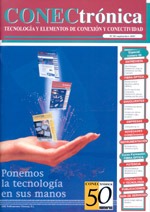
It's great to see publications hit these landmarks. When I talked to Carlos Martinez, commercial director at GM2 PUBLICACIONES TÉCNICAS, he was also very optimistic about the future, saying, “We are looking forward serving another 20 years more to the market." He also felt that this was an exciting time for the publication, commenting, "We're enthusiastic about covering the coming IoT and Industry 4.0 technologies.”
Well done to the whole team at CONECtrónica
What the HTML? Our marketing specialist Fiona lifts the lid on learning to code...
Before working at Napier, seeing the back end of a website or a broken email with all the code showing, was like getting a glimpse into a world of mystery and intrigue that only a select, brainy few had any knowledge of. It made me think of glasses wearing, Star Wars T-Shirt clad, IT… to put it frankly… geeks. I didn’t understand it. My friend used to blog a lot, she used some basic code to jazz up her posts, a couple of <b> tags here and there, the odd <br>. I gave it a go myself but didn’t know where to start. That’s not to say I haven’t wanted to learn. So when, within the first few weeks of starting at Napier, I was told I’d been learning HTML for creating email templates I was excited at the prospect of finally understanding what it was all about.
Nesting tables...
So how did I go from knowing virtually nothing about coding, to creating my own responsive email template within a matter of weeks? I started off by using online resources, looking at the very basics of HTML. As well as this, I had an in-house teacher. Diana, the Digital Marketing Manager here at Napier, is extremely skilled in the ways of all things code related. She was (and still is, when I call on her in a coding pickle) very patient and got me up to speed quickly. It’s all about tables in email, tables within tables. Once I’d begun to get my head around all the nesting, Diana gave me various tests and tasks to complete. I had to write a template out on paper, I re-arranged the layout of existing templates by adding and removing sections, I used a validator to check a seemingly innocent piece of code to fix the bugs and eventually I was able to create my own template from scratch.
Getting Creative...
I studied art at university and a few years ago I took a part time course in directing & cinematography, so generally I come from a creative background and I was quite surprised to find that there is an element of creativity in coding. It is really satisfying seeing those little tags turn into something much more colourful and aesthetically pleasing. Of course it hasn’t been all fun and games, there have been numerous occasions where I have been mere inches from my computer screen, desperately trying to work out why a certain element is behaving a certain way or why an image isn’t moving where I told it to move, only to have Diana come and take a look and within seconds spot that I have missed a simple semi-colon. It really can be that small of an error which then sends the rest into disarray.
To infinity and beyond...
At Napier, digital marketing is a large part of what we do. With email marketing still an extremely powerful tool, driving more conversions than any other marketing channel, being able to create an email template is a valuable skill to hold. Learning HTML has enabled me to work on client accounts and get fully immersed in email campaigns. HTML is ever evolving, especially with more emails being viewed on smartphones and tablets, it’s important to be able to cater to the different devices by making emails responsive. So learning is an ongoing process and it is challenging, but it’s also stimulating – like trying to solve a puzzle. And has my option of the type of people that code changed? Yes, of course! I don’t own a Stars Wars T-shirt... I’ve got a NASA one instead.


